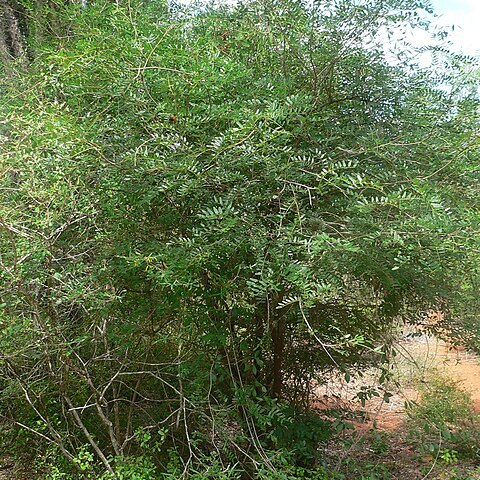Stamens many (23–126), usually crowded into several series round the rim of the hypanthium; filaments connate for up to 3 mm at base; anthers very small (up to 0.5 mm long), dorsifixed, dehiscing by longitudinal slits; connective glandular at the top.
Leaves imparipinnate; leaflets alternate to rarely subopposite, with minute pellucid dots or dashes between the smaller veins; stipules small, caducous.
Ovary (in hermaphrodite flowers) on a long gynophore exceeding the hypanthium, with several ovules, tapering to a short style with inconspicuous stigma.
Hypanthium (receptacle) well developed, campanulate; calyx subglobose and entire before dehiscence, splitting into (3)5 ± reflexed lobes.
Fruits ellipsoid to subglobose with a ± oblique beak, fleshy, indehiscent, with 1–6 seeds embedded in pulp.
Flowers hermaphrodite or male, the most conspicuous part being the many stamens.
Seeds large, with a thin testa; embryo with a straight radicle.
Inflorescences of rather short and usually clustered racemes.
Unarmed deciduous trees.
Petals 0.
